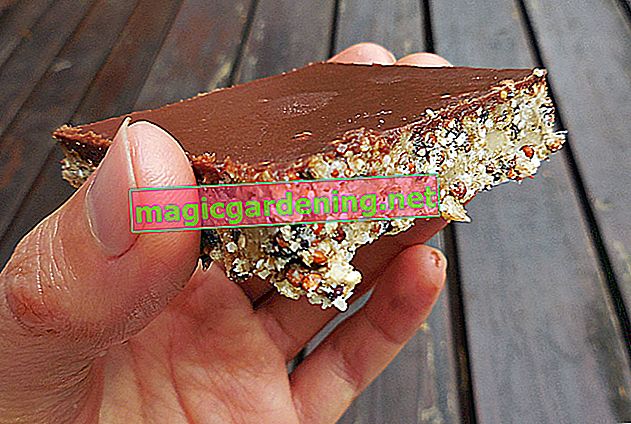
Reasons for germination
Quinoa is delicious and contains many valuable nutrients. However, the pseudo-grain also contains substances that our organism receives less:
also read
- Quinoa cultivation in your own garden
- Harvesting and processing quinoa
- Quinoa - a superfood that can be frozen well
Saponins
Saponins are bitter substances that are found in the shell and are supposed to protect the grains from predators. The commercially available quinoa has already been washed and / or peeled several times so that the bitter substances have been reduced. Additional washing will further reduce the harmful substance. However, sensitive stomachs and children can react to the toxins attacking our intestinal wall with abdominal pain.
Phytic acid
Phytic acid is a substance that helps the plant to germinate. It binds other nutrients, which leads to the inhibited absorption of nutrients in our organism. Enzymes and intestinal bacteria can only break down a limited amount of the acid. Good news: Phytic acid is broken down during soaking and germination.
Germinating Quinoa: A Guide
Quinoa germinates impressively quickly. You can see the first seedlings after just a few hours. Therefore, quinoa must not sprout for too long, otherwise the sprouts will no longer taste good. After a day, the quinoa sprouts should be consumed. When germinating, proceed as follows:
- Wash your quinoa seeds.
- Then let the seeds soak for several hours.
- Drain the seeds and place them in the germinating jar or leave them in the sieve.
- Rinse the quinoa seeds after 12 hours.
- After 24 hours you can harvest and prepare the seedlings.
The most important facts at a glance
- Ideal germination temperature: 18 to 20 degrees
- Germination time: start after a few hours, end after a day
- Before germination: wash thoroughly
- During germination: rinse once or twice and change the water
- Use: On bread, in salads, as raw food, fermented etc.
The nutrients in quinoa
Quinoa is considered a superfood and was even named Plant of the Year in 2013. The plant is also known as the Inca plant because the Inca consumed it over 6000 years ago. These nutrients make this plant, which belongs to the foxtail family, so special:
| nutrient | Per 100gr |
|---|---|
| protein | 13.7 g |
| fat | 5.0 g |
| carbohydrates | 60.8 g |
| Fiber | 4.4 g |
| potassium | 800 mg |
| Calcium | 80 mg |
| magnesium | 275 mg |
| iron | 8 mg |
| Vitamin E. | 100 µg |
| Vitamin B1 | 460 µg |
| Vitamin B2 | 45 µg |
| vitamin C | 4,200.000000 µg |
How to use quinoa seedlings
Quinoa sprouts are delicious and crunchy and can be eaten raw. Here are some more ideas on how to prepare your quinoa seedlings:
- with cheese on bread
- in the muesli
- in green smoothies
- in salads
- as a topping for hot dishes such as meat or soups
- As an ingredient in hummus or other dips
Tips
If you don't want to eat your quinoa sprouts right away, you can keep them tightly closed in the refrigerator for several days.








